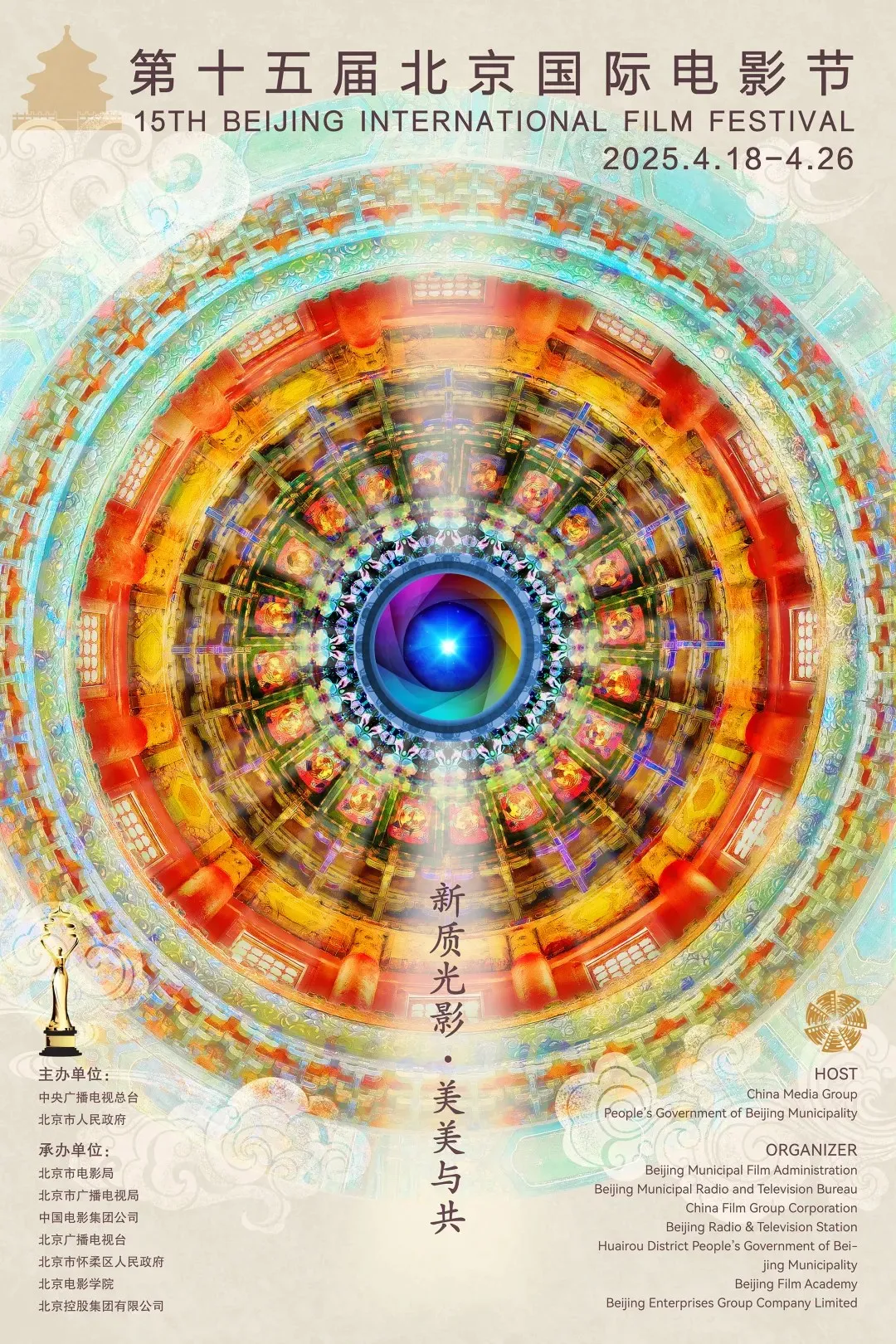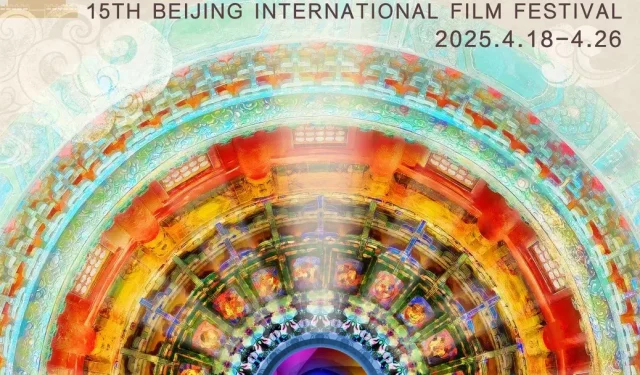Insights into the 15th Beijing International Film Festival Poster
The recently unveiled poster for the 15th Beijing International Film Festival (BJIFF) carries profound inspirations and messages, inviting viewers to explore its rich symbolism.
Design by a Renowned Artist
Created by Huo Tingxiao, an esteemed figure serving as the vice chairman of the China Film Association and president of the China Film Art Direction Academy, this poster reflects a deep commitment to artistic expression. Huo has previously lent his creative vision to iconic films such as Farewell My Concubine, Hero, and House of Flying Daggers. The design aims to celebrate “harmony in diversity” and “the spirit of mutual learning among civilizations,” according to festival organizers. It expertly fuses elements of traditional Chinese culture with the transformative art of cinema.
A Kaleidoscope of Meaning
The poster’s striking kaleidoscopic design represents cinema as a medium that unveils a vibrant and multifaceted world. The festival describes this artistic choice as embodying a series of colorful, evolving rings that incorporate the BJIFF windmill logo. At the center of this visual array, a radiant ‘Morning Star’ shines, symbolizing cinema’s role as a guiding light for dreamers.
Hidden Treasures and Cultural Significance
Additionally, the festival hints at a delightful “Easter egg” within the poster’s kaleidoscope. This design draws inspiration from the Ming Dynasty’s caisson ceiling found in the Wanchun Pavilion of the Imperial Garden, located in Beijing’s Forbidden City. The caisson is a hallmark of Chinese wooden architecture, showcasing exquisite craftsmanship that features intricate carvings and paintings.
Festival representatives emphasize that films resemble caissons in their construction: “ingeniously crafted by filmmakers to tell stories that resonate deeply, conveying rich imagination and emotional depth.”
Bridging Cultures Through Cinema
The festival concludes its reflections on this year’s poster by highlighting Beijing’s significance as a cultural epicenter and an international hub for artistic exchange. “The design suggests that Beijing draws on its unique artistic charm to forge a bridge of cinematic art,” the organizers state. This bridging of civilizations parallels the experience of gazing upward through a caisson, emphasizing that China, through the lens of cinema, projects an image of a forward-looking nation that welcomes dialogue and embraces inclusivity.



